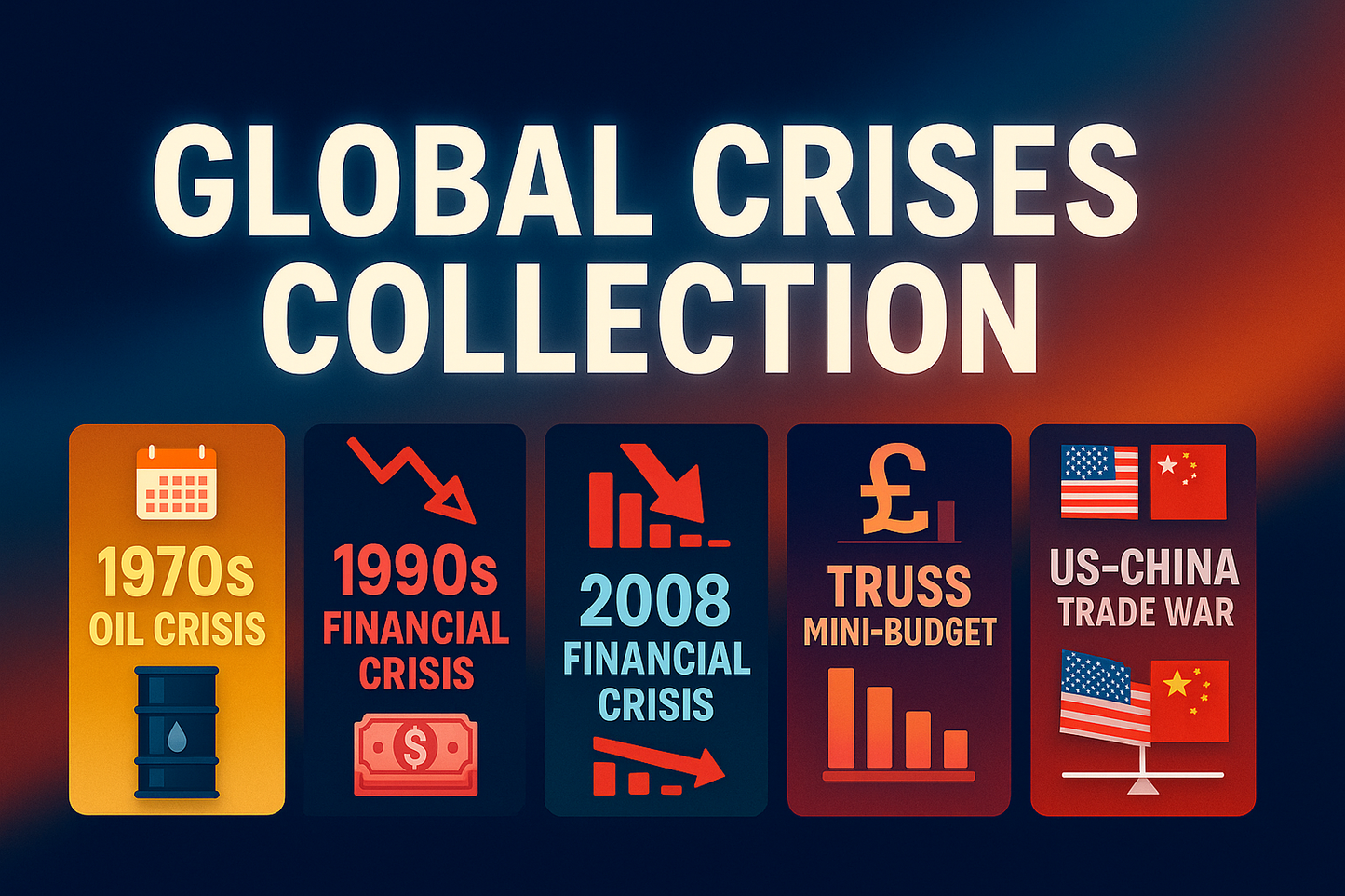BIZ-OMICS
Economics: Economic Shock Bundle Part 1
Economics: Economic Shock Bundle Part 1
Couldn't load pickup availability
This bundle of HTML products provides interactive, visually engaging timelines that bring major economic and political crises to life, including the 1970s Oil Shocks, the 1990s financial turmoil, the 2008 Global Financial Crisis, the Truss mini-budget collapse, and the US–China Trade War. Each product combines historical storytelling with dynamic design, making complex global events accessible, memorable, and classroom-ready for learners.
Financial Crisis Timeline
The Financial Crisis Timeline presents the 2008 global crash in a structured and accessible way, guiding students step by step through the collapse of Lehman Brothers, the subprime mortgage crisis, and the ripple effects across global markets. Its clean sequencing and emphasis on cause-and-effect help learners grasp how financial systems interconnect, while the polished design reinforces clarity and focus. The benefit here is that what can often seem like an overwhelming and abstract event becomes visually digestible, making it easier to teach and revise.
Mini Budget Timeline
The Mini Budget Timeline focuses on Liz Truss’s brief but turbulent premiership and the fallout of her “Growth Plan.” The HTML recreates those 49 days of political and financial upheaval with striking visuals, crisis markers, and dramatic design cues that mirror the chaos of market reactions. This product is particularly beneficial for contextualizing economic policy missteps in a modern UK setting, allowing students to see the very real consequences of political decisions on markets, public confidence, and global perceptions. Its immediacy and relevance make it a powerful classroom tool for linking textbook theory to lived economic history.
Oil Crisis Timeline
The Oil Crisis Timeline captures the seismic shocks of the 1970s energy crises, beginning with the OPEC embargo and extending through stagflation, recovery attempts, and the Iranian Revolution. By showing how oil prices quadrupled, unemployment surged, and inflation spiraled, the HTML allows students to explore stagflation as a unique phenomenon that defied traditional economic models. Its use of animated barrels, interactive content, and clear data visualization not only makes the material engaging but also reinforces key exam-relevant concepts such as supply shocks, energy dependency, and macroeconomic vulnerability. The benefit lies in turning what might otherwise be a dry history lesson into a vivid, interactive experience.
Turbulent 90s Timeline
The Turbulent 90s Timeline brings together the global crises of that decade, from Japan’s bubble economy collapse to the Mexican peso crisis, the Asian financial crisis, and the Russian default. The HTML structure combines retro-inspired visuals with detailed event breakdowns, contextual notes, and consequences, helping students appreciate the cyclical nature of financial instability. By drawing connections between seemingly distant economies, it underscores the rise of globalized finance and the risks of contagion effects. Its benefit lies in showing the decade not as a set of isolated shocks but as an interconnected narrative that shaped modern monetary policy and crisis management, preparing learners for synoptic exam thinking.
US–China Trade War Timeline
Finally, the US–China Trade War Timeline offers a modern and highly relevant case study of escalating tariffs, retaliations, and negotiations between the world’s two largest economies. Its interactive design lets students filter events by category—tariffs, negotiations, agreements—providing both chronological clarity and thematic flexibility. By including statistics such as trade deficits, tariff rates, and import figures, the HTML grounds abstract trade disputes in tangible data, while also highlighting the broader shift toward technological and strategic competition. The benefit here is its relevance: students can directly connect theory on protectionism, globalization, and economic interdependence to a live example still shaping world politics today.
Taken together, these products transform abstract or historically dense material into memorable, accessible, and visually dynamic resources. They benefit learners by making global economic crises not just topics to be memorized but stories to be explored, understood, and applied in analysis and evaluation.
Share


